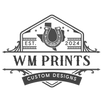In the ever-evolving field of aerospace engineering, precision, weight reduction, and innovation are critical factors that drive technological advancement. A recent breakthrough sentiment growing stronger every day is the integration of 3D printing into aerospace design and manufacturing. This post delves into how this transformative technology is changing the aerospace industry and what the future holds.
The Role of 3D Printing in Aerospace
3D printing, also known as additive manufacturing, has introduced new capabilities in the production of complex aerospace components. This technology allows for the creation of intricate geometries that were previously impossible or prohibitively expensive with traditional manufacturing methods. By building components layer by layer from a digital file, 3D printing reduces waste material and enhances efficiency—a boon for an industry that prioritizes both precision and cost-effectiveness.
Benefits of 3D Printing in Aerospace
- Weight Reduction: One of the primary benefits of 3D printing in aerospace is the ability to reduce the weight of components. This reduction leads to improved fuel efficiency and increased payload capacity.
- Complex Geometries: 3D printing allows engineers to design components with complex internal structures that can enhance performance while maintaining strength and integrity.
- Prototyping and Testing: Additive manufacturing enables rapid prototyping, allowing engineers to swiftly test and refine designs before final production. This capability drastically reduces the time and cost involved in the research and development phase of aerospace engineering.
- On-Demand Production: The customization potential of 3D printing facilitates on-demand production of parts, reducing the need for large inventories and enabling quicker responses to evolving needs.
Practical Applications in Aerospace
Modern aerospace projects increasingly depend on the flexibility and precision that 3D printing provides. NASA and various aerospace companies are extensively using additive manufacturing for parts like fuel nozzles, engine components, and even full-scale aircraft parts. The capacity to produce replacement parts or adapted equipment onsite in space missions holds particular promise for the future.
Additionally, engineers require reliable tools to maintain and enhance the capabilities of these intricate designs. For instance, a Lyman Type Prep Tools Holder can be an essential aid in the precise preparation and handling of components for 3D printed aerospace parts, ensuring that engineers can uphold the highest standards of quality and efficiency.
The Future of 3D Printing in Aerospace
Looking ahead, the role of 3D printing in aerospace will only expand as the industry pushes the boundaries of what is possible. The technology promises exciting developments in both civilian and defense sectors, paving the way for more efficient space exploration, aircraft production, and even the construction of structures in extraterrestrial environments.
As we continue to explore the vast potentials within aerospace engineering, the advancements in 3D printing present opportunities to rethink traditional processes and uncover new methodologies that drive progress.
Explore further insights and a range of unique, precision-engineered manufacturing solutions at WM Prints.





